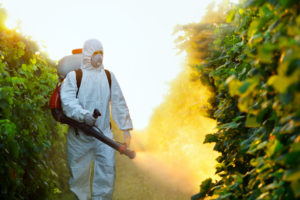After several extensions of the effective date, the U.S. Environmental Protection Agency’s (EPA) revisions to the Certification of Pesticide Applicators rule will take effect on May 22, 2018. The new regulations will impact approximately 1 million certified pesticide applicators across the country who use restricted use pesticides (RUPs), including commercial applicators and private applicators, such as farmers and ranchers.
The changes will affect all 50 states, the District of Columbia, 4 tribes, 6 territories, and 4 federal agencies that administer certification programs for RUP applicators. Though many certification programs already incorporate some of the elements of the new standards, the revisions will increase the minimum requirements necessary for these programs nationwide.
With less than 6 months left to prepare, you need to be aware of how these upcoming changes to the certification process will affect you and any pesticide applicators that you manage or employ.
What’s Changing?
The revisions to the certification standards are extensive, but some of the most significant changes you should keep in mind are:
- The establishment of a nationwide minimum age for any individual applying RUPs, including certified applicators and those working under their direct supervision;
- Strengthened competency standards for private applicators that include content necessary for safe application of RUPs, additional training, and examinations;
- The establishment of a mandatory 5-year recertification interval for commercial and private applicators;
- Required specialized certifications for those using certain application methods;
- Required annual pesticide safety training for noncertified applicators using RUPs who work under the direct supervision of certified applicators; and
- Clearer and more flexible requirements for states, tribes, and federal agencies to run their own certification programs so they can be tailored as needed.
There has historically been no national minimum age for pesticide applicators using RUPs. Under the new rule, all workers using RUPs must be at least 18 years old, with the exception of noncertified applicators working on farms under the supervision of a private applicator who is a member of their immediate family. These workers must be at least 16 years old.
Why Is This Happening?
The EPA decided to revise and strengthen the 42-year-old pesticide applicator certification standards in order to reduce the likelihood of harm, the levels of chronic exposure, and the incidents of ecological harm stemming from the misapplication of RUPs. The amended regulations may also help prevent almost 1,000 acute pesticide-related illnesses each year.
The new rules mandate increased supervision and oversight for RUP use overall, with stricter requirements for application methods that pose greater risks if not conducted properly, such as soil fumigation, nonsoil fumigation, and aerial application. As an additional protection, noncertified applicators will be required to receive safety training in order to protect both themselves and their families from “take-home” pesticide exposure. By strengthening the training and certification requirements across the board, EPA’s stated intent is to help those who apply RUPs have better knowledge and ability to use pesticides safely.
Should I Panic?
Even if you or your employees will be impacted by the extensive new requirements, you shouldn’t panic (at least not right way). States, tribes, territories, and federal agencies will have up to 3 years to develop and submit revised certification program plans that comply with the updated rules to the EPA. The EPA will then have an additional 2 years to review and approve the plan.
Furthermore, many state certification programs already contain at least some of the new guidelines, so depending on the rules in your jurisdiction, the ultimate impact on your organization might not be as dramatic as it first appears. For further information about the current pesticide applicator rules in your area, see the regulatory analysis and guidance available on Enviro.BLR.com®.
For an in-depth comparison of the current and new Certification of Pesticide Applicators rule, see the Comparison Chart of the 2016 Revisions to the Existing Certification of Pesticide Applicators Rule.

